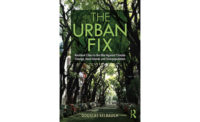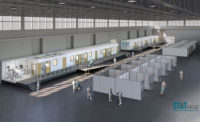Buildings play a role in an overarching problem facing all humankind. “If there’s no action before 2012, that’s too late. What we do in the next two to three years will determine our future.” Rajendra Pachauri, the economist/scientist heading the Nobel Prize–winning United Nations Intergovernmental Panel on Climate Change, speaking of his committee’s summary findings issued by Secretary General Ban Ki-moon on November 17, underscored the seriousness of our common challenge in The New York Times. The economy, health, even war pale by comparison to the stresses of rising pressure to our planet’s ecosystem.

The “Summary for Policymakers of the Synthesis Report of the IPCC Fourth Assessment Report” should be required reading for all architects. Consider a few of its sobering findings, all backed by international scientific consensus:
- Warming of the climate system is unequivocal, as is now evident from observation of increases of global average air and ocean temperatures, widespread melting of snow and ice, and rising global average sea level.
- Observations from all continents and most oceans shows that many natural systems are being affected by regional climate changes, particularly temperature increases.
- Most of the observed increase in globally averaged temperatures since the mid-20th century is very likely due to the observed increase in anthropogenic greenhouse gas (GHG) concentrations. [Editor’s Note: Rising temperatures are “very likely” due to human intervention.]
- There is high agreement and much evidence that with current climate-change mitigation policies and related sustainable-development practices, global GHG emissions will continue to grow over the next few decades.
- Continued GHG emissions at or above current rates would cause further warming and induce many changes in the global climate system during the 21st century that would very likely be larger than those observed during the 20th century.
The report specifically addresses buildings and their effects on the environment, recommending “key mitigation technologies and practices currently commercially available.” The short and simplistic list will be familiar to design professionals, including, among other suggestions, “efficient lighting and daylighting, more efficient electrical applications and heating and cooling devices.” Both LEED-certified professionals and ordinary architects could enumerate many more.
The positive message, embedded within the larger report, states the following: “There is high confidence that neither adaptation nor mitigation alone can avoid all climate change impacts; however, they can complement each other and together can significantly reduce the risks of climate change.” As we know from documents such as the AIA’s white paper on “Architects and Climate Change,” buildings remain the single largest contributors to climate change, both in emissions and energy consumption. More efficient buildings only make sense, now with increasing urgency.
At the same time that our world faces its greatest test, this publication and the global architectural media, with few exceptions, have celebrated architecture that ignores sustainable design. Hardly an issue of Architectural Record, or our fellow publications around the globe, fails to lavish pages and praise on buildings that hog energy; ignore variability of latitude or geographic placement and of social customs or shared lessons from diverse cultures; that exuberantly preen and strut to establish their own personalities and celebrity. We include the buildings of our own nation, the world’s largest source of greenhouse-gas emissions, as well as China, the second-largest, on the list. As the critic Peter Davey proclaimed at the recent Monterey Design Conference, too often we have wallowed in formalism for its own sake, at the expense of the environment.
What can we do about this extreme situation? First, categorically, we do not denigrate the art of architecture. Our lives are devoted to the joy of its evolution and dissemination. However, we recognize the peril of the moment and the folly of uncritical presentation, including buildings in the Middle East, for example, that blithely ignore the omnipresent sun.
Our first steps may seem modest. Beginning in April 2007, Architectural Record will feature sustainable houses in its signatory Record Houses issue. For the first time in decades, suitability will trump aesthetics, although we hope that featured architects manage to synthesize the two. And while we may not present performance characteristics with the rigor we can muster in our case-study-based publication GreenSource, RECORD will present performance characteristics for all subsequent projects, pointing out where and when architects have met the basic challenges. When we lack real data, we will substitute our own observations and evaluations, but no project will go unremarked.
“What we need is a new ethic in which every person changes lifestyle, attitude, and behavior,” says Achim Steiner, the leader of the United Nations Environment Program. Architectural Record, and the profession of architecture, agree. We will do our part. Will you do yours?
To view a more complete version of the United Nations summary report, go to http://www.ipcc.ch/pdf/assessment-report/ar4/syr/ar4_syr_spm.pdf.
If you wish to write to our editor-in-chief you can email him rivy@mcgraw-hill.com.




Post a comment to this article
Report Abusive Comment